Ford Puma vs Hyundai i20 – Kumpi auto sopii sinulle paremmin?
Kaksi autoa, yksi kaksintaistelu: Ford Puma kohtaa Hyundai i20.
Kumpi vakuuttaa enemmän suorituskyvyssä, kulutuksessa ja hinta–laatusuhteessa? Selvitä nyt!
Ford Puma vs. Hyundai i20: A Clash of Styles and Innovation
In the ever-evolving automotive world, the Ford Puma and Hyundai i20 embody the latest trends and technology. While these vehicles cater to slightly different audience segments, their comparative analysis reveals fascinating insights into their designs, performance, and the innovative features they bring to the table.
Design and Body Type
The Ford Puma takes the form of a compact SUV, appealing to those who desire a higher driving position and a sporty look. With a length ranging from 4186 mm to 4226 mm, a width of 1805 mm, and a height around 1550 mm, the Puma brings a robust yet stylish exterior to the scene.
In contrast, the Hyundai i20 is a sleek hatchback, designed for city life and those who prioritize maneuverability and compact design. With dimensions of 4075 mm in length, a width of 1775 mm, and a height between 1450 mm and 1455 mm, it offers a more compact profile but retains an appealing sense of elegance.
Engine and Performance
Under the hood, the Ford Puma offers a variety of powertrains, including both Petrol MHEV and electric versions, with power outputs ranging from 125 HP to 168 HP. The consumption varies between 5.4 L/100km for petrol and 13.1 kWh/100km for electric models, with an impressive electric range up to 376 km. The torque ranges from 170 to 290 Nm, translating to a dynamic driving experience, and its acceleration from 0 to 100 km/h can be as quick as 7.4 seconds, depending on the model.
The Hyundai i20, meanwhile, offers more modest powertrain options, ranging from 79 HP to 100 HP. The petrol variants exhibit efficiency, consuming between 5.1 and 5.3 L/100km. With torques reaching up to 200 Nm, the i20 is responsive, though its acceleration time stands at a more leisurely 11.1 to 13.7 seconds from 0 to 100 km/h.
Transmission and Drive Type
Both models sport Front-Wheel Drive configurations, catering to those who favor simplicity and efficiency. The Ford Puma offers versatility with manual and dual-clutch automatic transmissions, while the Hyundai i20 provides options of manual and dual-clutch automatic gearboxes, focusing more on user-friendly urban driving.
Innovation and Technology
The Ford Puma integrates advanced hybrid technology within its MHEV models, significantly boosting fuel efficiency and minimizing CO2 emissions with a class as high as 'A'. Features like the electric model's reduction gearbox and its varied driving modes underscore Ford's commitment to innovation.
Hyundai's i20 doesn't fall short either, emphasizing a technology suite that includes various driver-assistance systems aimed at safety and convenience, coupled with attention to reducing environmental impact, boasting a CO2 figure of 120 g/km.
Practicality and Interior Space
The Puma's SUV design provides ample interior space with a trunk capacity ranging from 456 to 523 liters and a seating capacity for five, making it a practical choice for families or individuals who need extra storage.
The i20 offers a trunk space of 352 liters, optimizing its compact form for urban settings. Its design comfortably accommodates five passengers, focusing more on efficiency and ease of navigation in tight cityscapes.
Conclusion
In the matchup of the Ford Puma versus the Hyundai i20, the choice hinges largely on customer priorities. The Puma stands out for its versatile power options, robust SUV design, and technological advancements. In contrast, the i20 shines with its compact maneuverability, efficient performance, and urban appeal. Both cars reflect the innovative spirit of their respective manufacturers and showcase the continuous evolution of automotive engineering.
Tässä mennään yksityiskohtiin: tekniset erot tarkemmin
Kustannukset ja kulutus: Hinta ja kulutus ovat tärkeimpiä ostopäätökseen vaikuttavia tekijöitä – ja juuri täällä erot usein korostuvat.
Hyundai i20 on hinnassa ratkaiseva edullisempi – sen lähtöhinta on 20300 €, kun taas Ford Puma maksaa 28900 €. Ero on noin 8600 €.
Polttoaineenkulutuksessa näkyy ero: Hyundai i20 kuluttaa 5.20 L ja on siten vähäinen taloudellisempi kuin Ford Puma, jonka kulutus on 5.40 L. Ero on noin 0.20 L /100 km.
Moottori ja suorituskyky: Teho, vääntömomentti ja kiihtyvyys ovat autoharrastajien klassisia mittareita – ja erot tulevat tässä hyvin esiin.
Moottoritehossa Ford Puma on selvä etulyöntiasemassa – 168 hv verrattuna 100 hv:een. Ero on noin 68 hv hv.
Kiihdytyksessä 0–100 km/h Ford Puma on merkittävä nopeampi – 7.40 s vs. 11.10 s. Ero on noin 3.70 s sekuntia.
Huippunopeudessa Ford Puma on jonkin verran edellä – se yltää 210 km/h:een, kun taas Hyundai i20 saavuttaa 183 km/h. Ero on noin 27 km/h.
Vääntömomentissa näkyy myös ero: Ford Puma vetää selvästi havaittava voimakkaammin, 290 Nm verrattuna 200 Nm:een. Eroa on noin 90 Nm.
Tila ja käytännöllisyys: Tehon ohella arjessa ratkaisevat mukavuus ja käytännöllisyys. Tässä selviää, kumpi auto on monipuolisempi ja tilavampi.
Molemmissa autoissa on tilaa 5 henkilölle.
Omapainossa Hyundai i20 on ilmeinen kevyempi – 1088 kg verrattuna 1316 kg:een. Painoero on noin 228 kg.
Tavaratilan koossa Ford Puma tarjoaa ilmeinen enemmän – 523 L verrattuna 352 L:een. Ero on noin 171 L.
Maksimikantavuudessa Ford Puma pärjää vähäinen paremmin – jopa 1283 L, noin 118 L enemmän kuin Hyundai i20.
Kantavuudessa Hyundai i20 on kevyt parempi – 472 kg verrattuna 469 kg:een. Ero on noin 3 kg.
Kokonaisuudessaan Ford Puma on hallitsee vertailua ja nappaa näin DriveDuel Champion -tittelin.
Se vakuuttaa tasapainoisemmalla kokonaisuudellaan ja on käytännöllisempi kumppani arjessa.
Ford Puma
Ford Puma on saanut runsaasti huomiota upealla muotoilullaan ja käytännöllisillä ominaisuuksillaan. Sen kompakti koko yhdistää mukavasti energisen ajokokemuksen ja tilavat tavaratilat. Tämä auto on täydellinen valinta kaupunkiajoon, yhdistäen tyylikkyyden ja toimivuuden saumattomasti.
Tiedot @ puma.fordpresskits.com
@ puma.fordpresskits.com
 @ puma.fordpresskits.com
@ puma.fordpresskits.com
 @ puma.fordpresskits.com
@ puma.fordpresskits.com
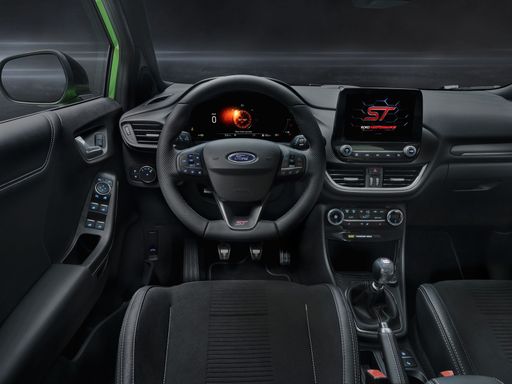 @ puma.fordpresskits.com
@ puma.fordpresskits.com
Hyundai i20
Hyundai i20 on kompakti auto, joka yhdistää tyylikkään muotoilun ja käytännöllisyyden. Sen sisustus tarjoaa modernit ominaisuudet ja mukavuutta päivittäisessä ajossa. i20:n ajettavuus tekee siitä erinomaisen valinnan niin kaupunkisopeutumiseen kuin pidemmillekin matkoille.
Tiedot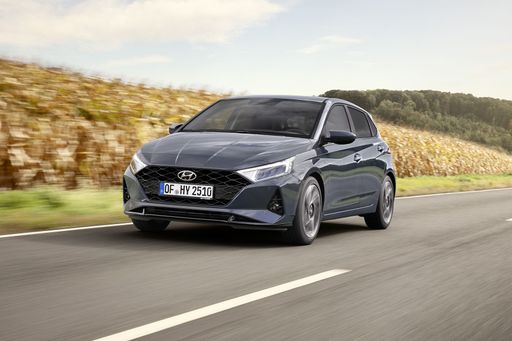 @ hyundai.news
@ hyundai.news
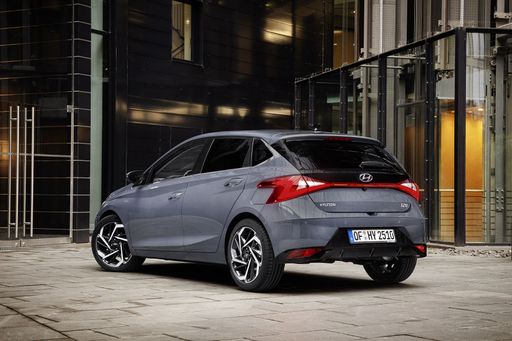 @ hyundai.news
@ hyundai.news
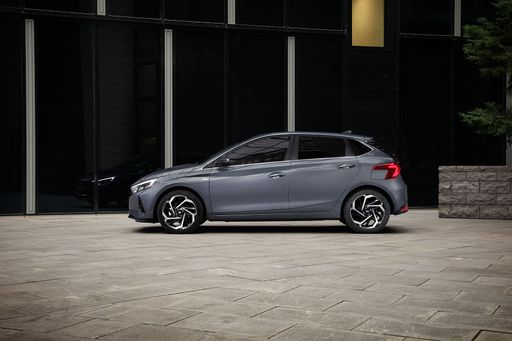 @ hyundai.news
@ hyundai.news
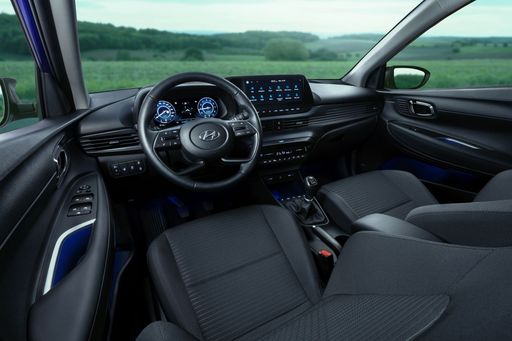 @ hyundai.news
@ hyundai.news
 @ hyundai.news
@ hyundai.news

|

|
|
|
|
Kustannukset ja kulutus |
|
|---|---|
|
Hinta
28900 - 42400 €
|
Hinta
20300 - 28000 €
|
|
Kulutus L/100km
5.4 - 5.9 L
|
Kulutus L/100km
5.2 - 5.3 L
|
|
Kulutus kWh/100km
13.1 - 13.9 kWh
|
Kulutus kWh/100km
-
|
|
Sähköinen toimintasäde
361 - 376 km
|
Sähköinen toimintasäde
-
|
|
Akun kapasiteetti
43 kWh
|
Akun kapasiteetti
-
|
|
CO2
0 - 135 g/km
|
CO2
119 - 121 g/km
|
|
Polttoainesäiliön tilavuus
42 L
|
Polttoainesäiliön tilavuus
40 L
|
Mitat ja kori |
|
|---|---|
|
Kori
SUV
|
Kori
Hatchback
|
|
Istuimet
5
|
Istuimet
5
|
|
Ovet
5
|
Ovet
5
|
|
Omamassa
1316 - 1563 kg
|
Omamassa
1088 - 1190 kg
|
|
Tavaratila
456 - 523 L
|
Tavaratila
352 L
|
|
Pituus
4186 - 4226 mm
|
Pituus
4065 - 4075 mm
|
|
Leveys
1805 mm
|
Leveys
1775 mm
|
|
Korkeus
1550 - 1555 mm
|
Korkeus
1450 - 1455 mm
|
|
Maksimi tavaratila
1216 - 1283 L
|
Maksimi tavaratila
1165 L
|
|
Kantavuus
367 - 469 kg
|
Kantavuus
450 - 472 kg
|
Moottori ja suorituskyky |
|
|---|---|
|
Moottorityyppi
Sähkö, Bensiini MHEV
|
Moottorityyppi
Bensiini
|
|
Vaihteisto
Automaatti, Manuel
|
Vaihteisto
Automaatti, Manuel
|
|
Vaihteiston tyyppi
Alennusvaihteisto, Manuaalivaihteisto, Kaksoiskytkin automaatti
|
Vaihteiston tyyppi
Kaksoiskytkin automaatti, Manuaalivaihteisto
|
|
Vetotapa
Etuveto
|
Vetotapa
Etuveto
|
|
Teho hv
125 - 168 hv
|
Teho hv
79 - 100 hv
|
|
Kiihtyvyys 0-100 km/h
7.4 - 9.8 s
|
Kiihtyvyys 0-100 km/h
11.1 - 13.7 s
|
|
Huippunopeus
160 - 210 km/h
|
Huippunopeus
166 - 183 km/h
|
|
Vääntömomentti
170 - 290 Nm
|
Vääntömomentti
113 - 200 Nm
|
|
Sylinterien lukumäärä
3
|
Sylinterien lukumäärä
3 - 4
|
|
Teho kW
92 - 124 kW
|
Teho kW
58 - 74 kW
|
|
Iskutilavuus
999 cm3
|
Iskutilavuus
998 - 1197 cm3
|
Yleiset |
|
|---|---|
|
Mallivuosi
2025
|
Mallivuosi
2024
|
|
CO2-tehokkuusluokka
A, D
|
CO2-tehokkuusluokka
D
|
|
Merkki
Ford
|
Merkki
Hyundai
|
Onko Ford Puma saatavana eri vetotavoilla?
Mallia tarjotaan Etuveto-versiona.
Näytetyt hinnat ja tiedot ovat arvioita, jotka perustuvat Saksan listahintoihin, ja voivat vaihdella maittain. Nämä tiedot eivät ole oikeudellisesti sitovia.
